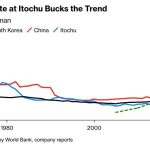Type 2 diabetes is a complex metabolic disorder characterized primarily by too much glucose in the blood due to the body’s inability to produce insulin or use it properly.
A team led by Professor Manuel Vázquez-Carrera, from the Faculty of Pharmacy and Food Sciences and the Institute of Biomedicine of the University of Barcelona (UB), has carried out a review of the results of studies on the growth differentiation factor 15 (GDF15) —a protein that is expressed under conditions of physiological stress— and its potential impact on the treatment of type 2 diabetes. The review has been made on the most recent research on the functioning of this cytokine, which is consolidated as a potential therapeutic target against the aforementioned disease.
“This review brings together the latest news on the metabolic effects of GDF15 in the context of type 2 diabetes, which represents an important shift from what was known until now. The findings in animal models are especially encouraging and indicate that therapies based on GDF15 are promising for the treatment of this disease, although clinical studies in humans are necessary to confirm this”, highlights Manuel Vázquez-Carrera, who is also a researcher at the Institute of Research by Sant Joan de Déu (IRSJD) and the Center for Biomedical Research in the Network of Diabetes and Associated Metabolic Diseases (CIBERDEM), in Spain.
Beneficial effects on metabolism
In situations of stress of intracellular organelles such as those that cause type 2 diabetes and other diseases, cells secrete stress-sensitive cytokines —such as GDF15—, which activate mechanisms to counteract processes such as inflammation or insulin resistance.
Recent studies have shown that these beneficial effects on metabolism occur through activation of the GFRAL receptor in the brain: once activated, food intake is reduced and consequently weight loss occurs, reducing obesity and improving associated diseases such as type 2 diabetes. However, new evidence collected in this review indicates that the cytokine GDF15 may have mediation for other peripheral receptors that also contribute to improving metabolic alterations.
“Until now, it was thought that the effects of GDF15 were mediated exclusively by this central GFRAL receptor, with expression restricted to neurons in the area postrema and nucleus tractus solitarius, brain regions involved in the control of hunger and regulation of body weight. », explains the researcher. “GDF15 has now been shown to have beneficial effects such as increased thermogenesis, lipid catabolism, and mitochondrial oxidative phosphorylation independent of changes in food intake, suggesting that GDF15 might also exert its effects at through receptors other than GFRAL and independently of hunger reduction.”
According to the researchers, the discovery of the potential peripheral receptors responsible for these metabolic effects of GDF15 can “help to better understand how this stress cytokine acts and facilitate its pharmacological modulation.”
From left to right: Emma Barroso, Marta Montori, David Aguilar-Recarte, Xavier Palomer, Lucía Peña, Gaia Botteri, Manuel Vázquez-Carrera, Mohammad Zarei and Javier Pizarro Delgado. (Photo: University of Barcelona. CC BY)
Alternative pathway of metabolism
Along these lines, Manuel Vázquez-Carrera’s team has made important advances regarding the functioning of GDF15 in metabolism. In a previous study, he discovered that this cytokine activates the AMPK kinase, which regulates many processes related to cellular energy metabolism, such as increased glucose uptake and fatty acid oxidation, increased mitochondrial oxidative capacity or improved metabolism. insulin sensitivity. This activation occurs independently of the GFRAL receptor in the brain, and shows an alternative pathway of energy metabolism regulated by GDF15.
“This kinase is a key regulator of metabolism and is a fundamental therapeutic target for the treatment of type 2 diabetes, since metformin, the drug of first therapeutic choice for this disease, activates AMPK. These results seem to indicate that part of the antidiabetic effects of GDF15 could be mediated by the activation of AMPK”, highlights the researcher.
New therapeutic challenges
The function of GDF15 as a suppressant of hunger and regulator of energy metabolism has opened the door to the possibility of administering GDF15 pharmacologically to treat type 2 diabetes. However, the researchers warn that the pharmacokinetic and physicochemical properties of GDF15 present several challenges for its development as a drug, such as the short half-life when administered subcutaneously or some adverse effects.
These obstacles have led to the development of GDF15 analogues, that is, structurally similar chemical compounds that aim to improve the efficiency and pharmacokinetics of GDF15 for the treatment of diabetes. “In fact, some of these analogous aspects of GDF15 have already entered clinical trials,” the study investigators note.
Another potential therapeutic strategy has emerged from the recent discovery of the effects of MT1-MMP, a type of protein capable of suppressing the impact of GDF15 on hunger in the context of obesity. “This discovery opens the door to designing MT1-MMP inhibitors to enhance the GDF15-GFRAL pathway and its hunger-reducing effects. Therefore, the steps that must be taken in the future will be aimed at determining the efficacy and safety of GDF15, or possible analogs or inducers of this cytokine », he concludes.
The review is titled “Knocking on GDF15’s door for the treatment of type 2 diabetes mellitus.” And it has been published in the academic journal Trends in Endocrinology and Metabolism. (Source: UB)












![[Img #67234]](https://thelatestnews.world/wp-content/uploads/2022/10/Promising-therapeutic-target-against-type-2-diabetes.jpg)


